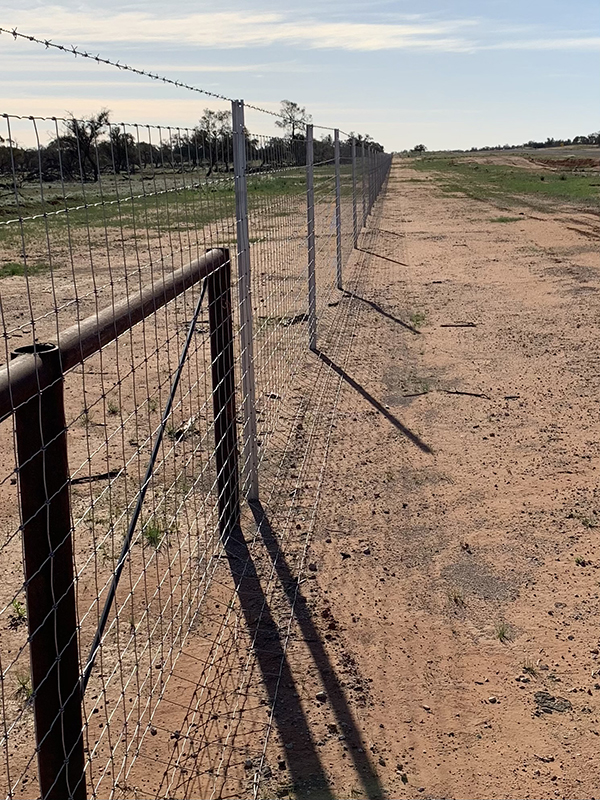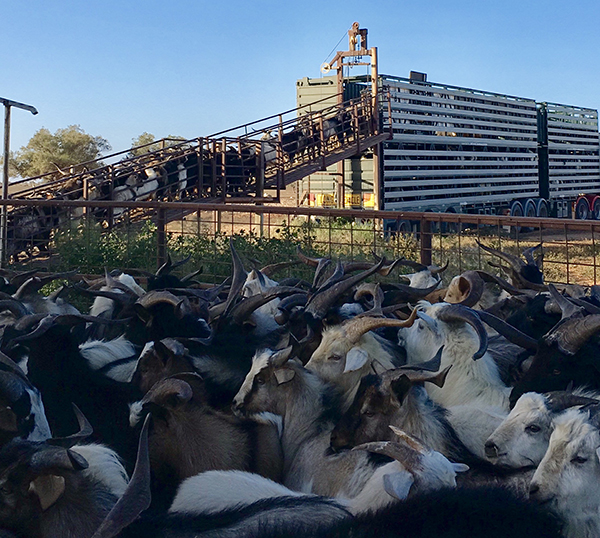Shift to rangeland goats continues to reap benefits
29 November 2022
 Rick Gates drafting rangeland goats at one of the family’s registered goat depots. Credit: Gates Goats.
Rick Gates drafting rangeland goats at one of the family’s registered goat depots. Credit: Gates Goats.
Key points:
- Western Division goat producers, Rick and Joanne Gates shifted their livestock operation from Merino sheep to rangeland goats 25 years ago.
- Rangeland goats have proven to be ideally suited to the landscape, with groundcover and pastures significantly improving in that time.
- The Gates target both domestic and export goatmeat markets, aiming to turn-off 2,500 goats per week for processing.
Based in far west NSW, the Gates operate Gates Goats, comprising registered goat depots at Woolahra Station, Ivanhoe, and Burndoo Station, Wilcannia.
The depots consolidate significant numbers of harvested rangeland goats from other livestock producers within a 200–250km radius.
Between the goats sourced through the depot and their own rangeland goats which are harvested, they aim to turn off about 2,500 goats a week, targeting a range of market specifications for both domestic and export goatmeat markets.

Rangeland goats at one of Gates Goats’ two depots. Credit: Gates Goats
Environmental benefits
Rick says despite many myths and misconceptions about goats and their impact on the environment, the landscape at the family’s two properties is showing the long-term benefits of making the shift from sheep to goats.
“Goats are definitely browsers which has encouraged groundcover and pasture growth and prevented erosion,” Rick said.
“The country is in the best condition I’ve seen it since we first came here in 1985. We’ve got more grass and groundcover, and I’m proud to drive through the place and say, ‘this is where we’ve got to’.
“We had Merinos up until 1997 when we sold the last mob. The country is quite heavy in burr medic and is not friendly to wool production. Vegetable matter was the biggest challenge and the sheep didn’t grow out terribly well.
“In contrast, goats favour woody weed such as hopbush. Hopbush was a problem when we had Merinos, but now we graze it and maintain it, similar to lucerne, so they don’t graze it out.
“Also, it doesn’t matter if you run sheep, cattle or goats, if they’re not stocked at the right rates, you won’t get good outcomes. The stocking rate has got to suit their landscape, and depending on the season, we run about one goat on eight to 10 acres.”
While the depots comprise about 50% of the Gates’ enterprise, the other 50% involves mustering and harvesting their own rangeland goats.
“When supply is up, it’s normally the goats that are too small to slaughter that we keep as grow-out goats, rather than for breeding,” Rick says.
“After the 2017–2019 drought when supply was down, we spent two years breeding rangeland goats, selecting the better nannies out of the rangeland population.
“We looked for shorter haired animals with good front legs and big, thick long ears.
“After two years, we saw an improvement in the frame of the goats. It surprised me how good the top 20% of those goats are.
“Now supply is up, we’re focusing on growing out goats again, but it was an interesting couple of years.”

Rick says the environment and landscape at the family’s two properties is showing the long-term benefits of making the shift from sheep to rangeland goats. Credit: Gates Goats
Target markets
Most loads arrive as mixed lines, ranging from young goats to big billies. Once they arrive at the depot, the goats are drafted according to characteristics such as gender, size, weight and condition.
Bigger goats of 32kg liveweight and over are predominantly sent for processing to be exported as skin-off to the United States. Goats under 32kg liveweight are process for the domestic market and for skin-on export to the US and Asian markets.
For biosecurity reasons, mobs from Woolahra Station and Burndoo Station are kept separate, depending on which depot they are trucked from, and transported and processed separately.
The goats are processed predominantly in Victoria, and while the export market is the main market, Rick says demand from the domestic market is growing.
“The strength of the domestic market is not to be underestimated, it’s quite strong. We have seen a big growth in the domestic market in the last four to five years,” Rick says.
While the goat market has experienced a price correction this year from over $10/kg down to between $5–$6/kg, Rick believes the industry has a positive future. Price corrections are not uncommon in the goat industry.

The Gates family has erected exclusion fencing around the two properties at an initial cost of $10–$12/acre. Rick says the fencing has enhanced biosecurity and helped control total grazing pressure. Credit: Gates Goats
Making the change
Rick says for any producers contemplating diversifying into rangeland goats, the biggest investment they have to make is investing in fencing and infrastructure.
“Merino fencing wasn’t suitable and so we fenced all of the property with multi-wire fencing. The yards had to be adapted and made higher – rather than one metre, the yards had to be 1.2 to 1.3 metres high,” Rick says.
“In recent years, we have erected exclusion fencing around the two properties at an initial cost of $10–$12/acre. Although this was a substantial investment it has enhanced our biosecurity position and helped control total grazing pressure.
“We encourage people to become involved in the industry as goatmeat ‘ticks all the boxes’ for the global demand for healthy, low-fat red meat.”

Rangeland goats being loaded for transport to processors. Credit: Gates Goats


